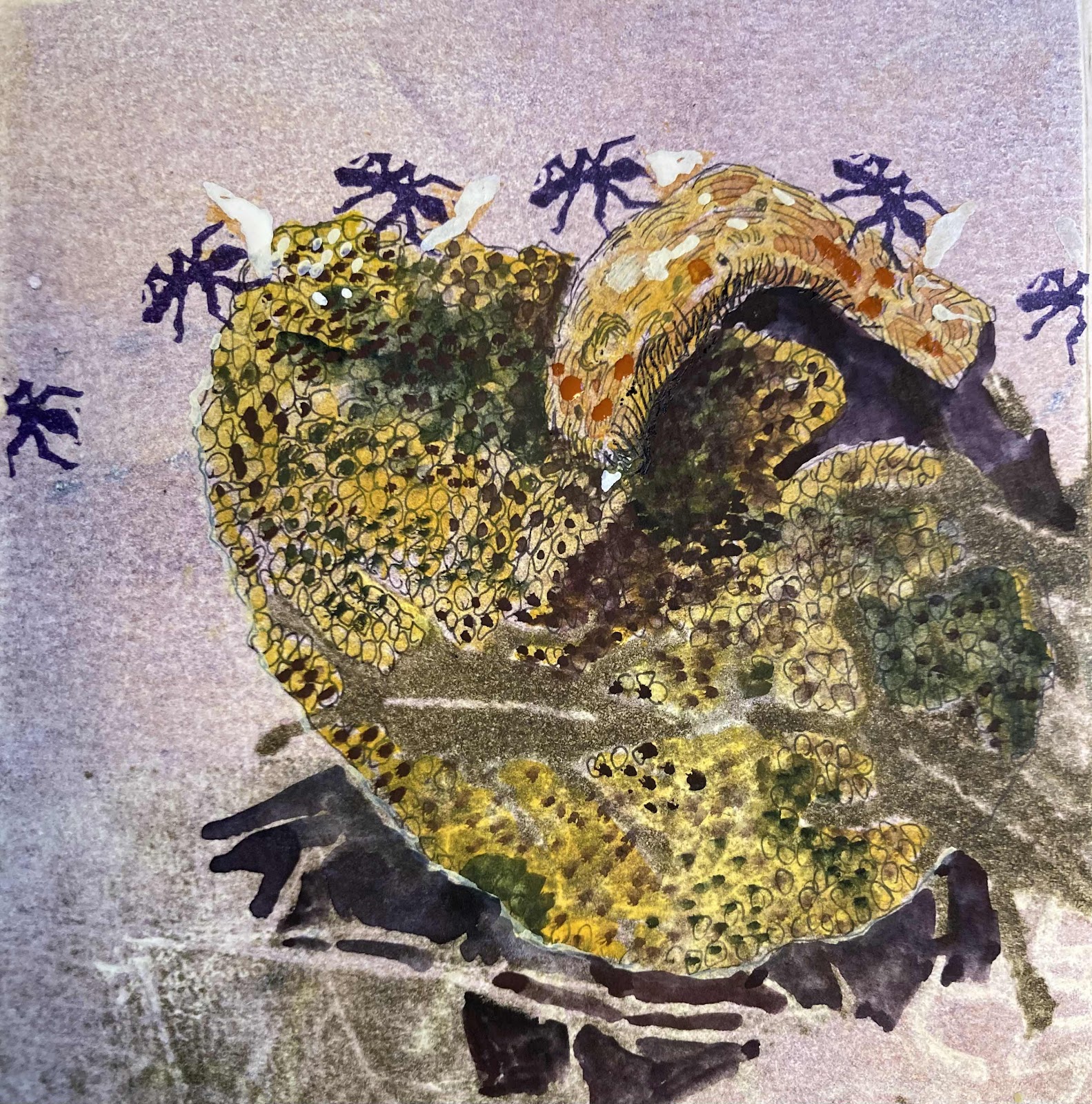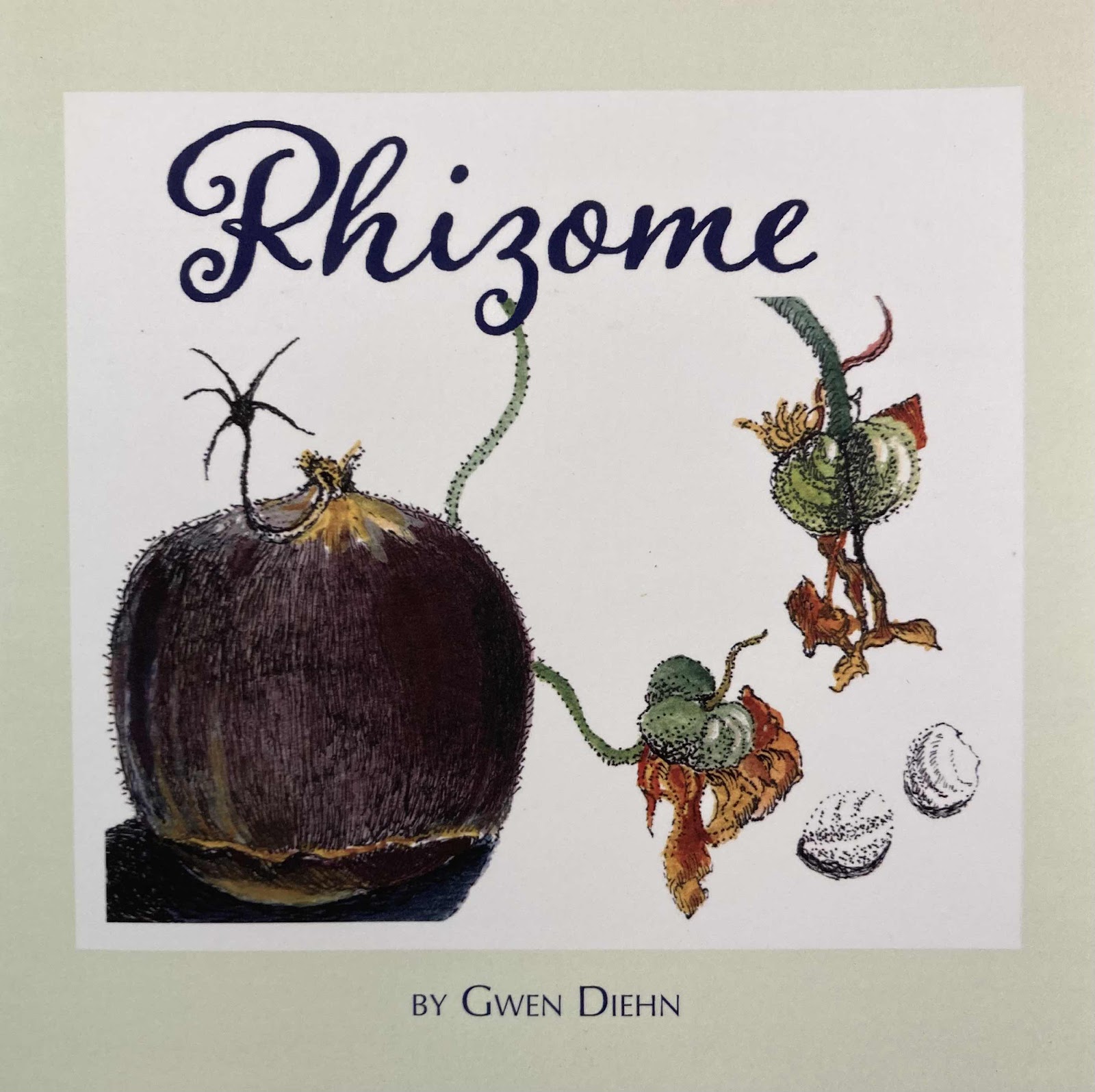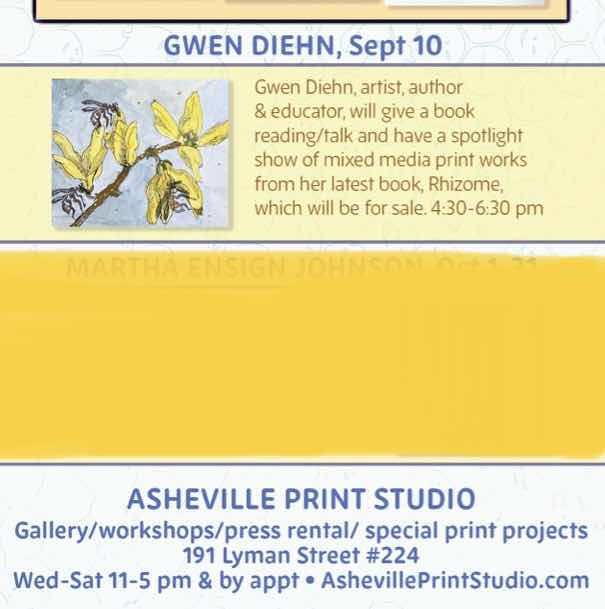This single-file parade of large ants was removing sections of the spore tubes of a spent mushroom and marching off with the whitish pieces held like sails above their heads. After a few feet they disappeared into a hole in the forest floor under some dry leaves. Food for the ants to store for their larvae, and at the same time, the forest floor was being cleared of debris.

Another reason for coming out of posting sabbatical is that this Saturday is my reading and signing event at Asheville Print Studio, where the original sketches of all the illustrations in Rhizome will be on display and available for handling. I’ll read a few short sections of the book, answer questions, and talk about how the book came to be. There will also be copies of Rhizome on sale.


Hope to see you, local peeps! To find APS, go down to Lyman Street in the River Arts District. 191 is one of the large brick buildings across from the biking and hiking trail along the river. Riverview Station is the name on the building. The studio is on the second floor, and you can enter from the ground floor door near the Tyger Tyger studio. Go upstairs and turn right at the top of the stairs and left after you pass the restrooms. First studio/gallery on the left. There will be signs and arrows. The reading starts at 4:30 pm.
Another reason for coming out of posting sabbatical is that this Saturday is my reading and signing event at Asheville Print Studio, where the original sketches of all the illustrations in Rhizome will be on display and available for handling. I’ll read a few short sections of the book, answer questions, and talk about how the book came to be. There will also be copies of Rhizome on sale.
Hope to see you, local peeps! To find APS, go down to Lyman Street in the River Arts District. 191 is one of the large brick buildings across from the biking and hiking trail along the river. Riverview Station is the name on the building. The studio is on the second floor, and you can enter from the ground floor door near the Tyger Tyger studio. Go upstairs and turn right at the top of the stairs and left after you pass the restrooms. First studio/gallery on the left. There will be signs and arrows. The reading starts at 4:30 pm.
#ashevilleprintstudio#naturesketching#riverarts
